Over the past few years, I have reviewed a variety of Ford F150 pickups and when readers write in to ask questions about my test trucks, the most common question regarding the Ford F150 is “which is better – the EcoBoost V6 or the 5.0L V8”? Prospective buyers can look at specifications all day and make assumptions, but with my relatively intensive testing, readers often ask which of the two premium F150 engines I think is best for someone who actually puts their truck to work.
In the past, I have never had a chance to compare the two engines back to back, but thanks to the folks at Ford Motor Company, I was able to spend a week with a pair of 2016 F150 pickups a week apart earlier this spring. Mind you, I didn’t have the trucks at the exact same time, but I did run both trucks through the same standardized tests that I use for all of my truck and SUV reviews, including towing my horse trailer and hauling a thousand pounds of bagged horse feed.
The Test Trucks
Before getting into my views on the working abilities of the 2016 Ford F150 with the two different engines, a look at the trucks themselves.
Truck #1 was a 2016 Ford F150 Lariat 4x4 SuperCrew with the 5.0L V8, the Trailer Tow Package with 3.55 gears and 18 inch wheels. This truck has 385 horsepower, 387lb-ft of torque, a towing capacity of 9,000lbs and a payload capacity of 2,100lbs.
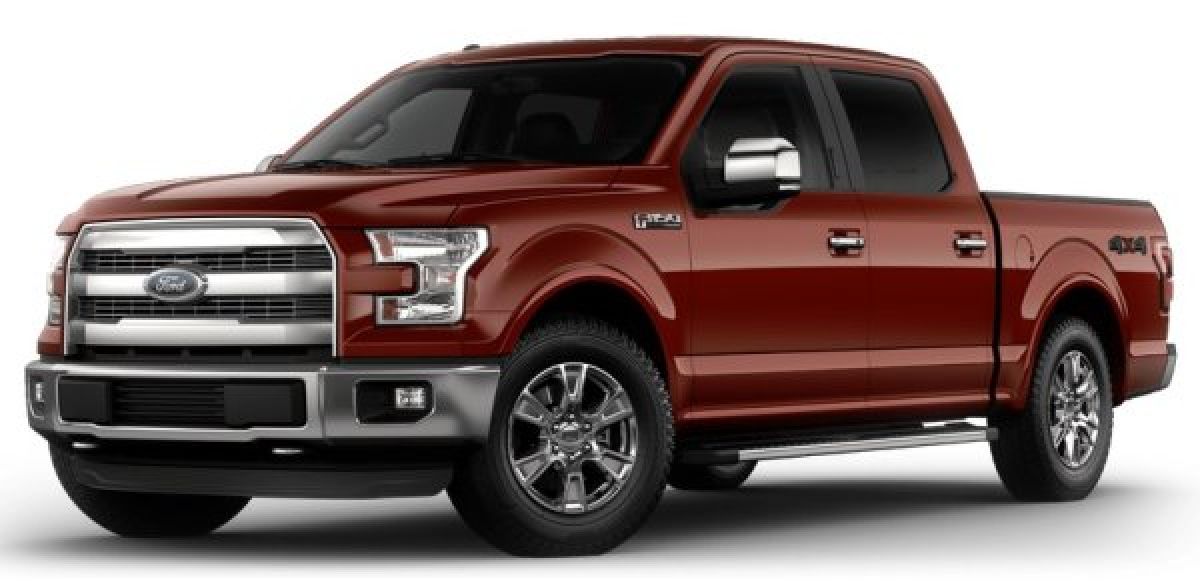
Truck #2 was a 2016 Ford F150 Limited 4x4 SuperCrew with the 3.5L EcoBoost twin turbocharged V6, the Trailer Tow Package with 3.55 gears and 22 inch wheels. This truck has 365 horsepower, 420lb-ft of torque, a towing capacity of 10,700lbs and a payload capacity of 1,450lbs.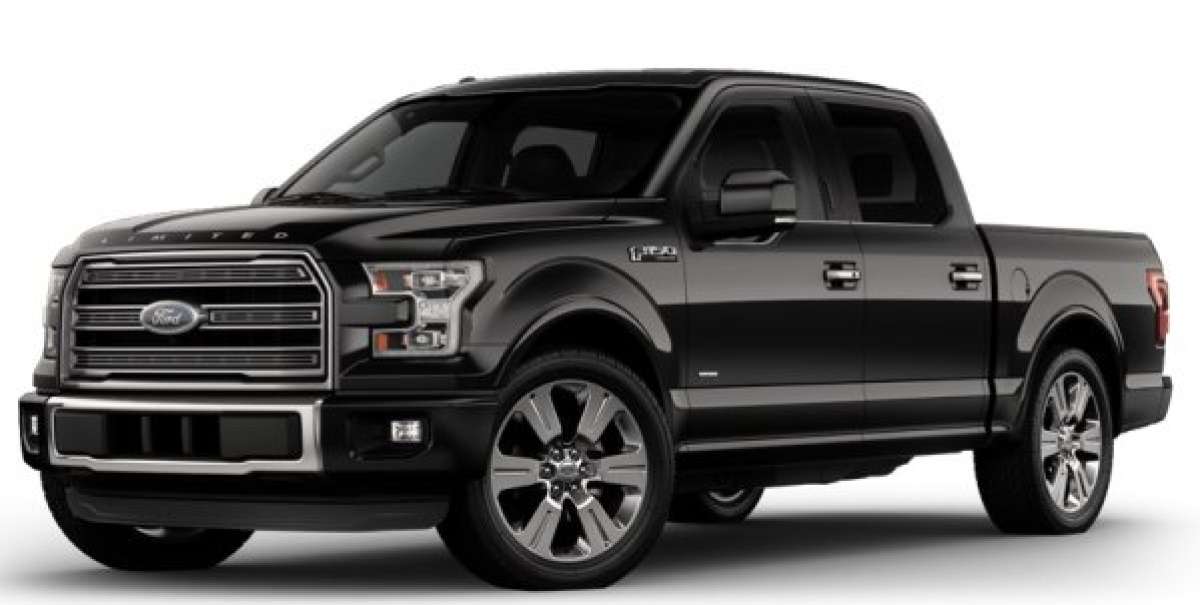
The two 2016 F150 pickups were physically similar in terms of bed and cab sizes, and according to their base weights on Ford.com, the EcoBoost drivetrain weighs about 40 pounds more than the V8 drivetrain in their most basic SuperCrew, 145” wheelbase form. Of course, the Multi-Contour seats and the huge 22 inch wheels of the EcoBoost’d F150 Limited likely add a little more to the curb weight, but for the sake of discussion, we know that the EcoBoost truck is a little heavier than the V8 truck that I tested.
As you can see from the specs above, the V8 has an advantage in horsepower and payload capacity while the EcoBoost F150 has an advantage in torque and towing capacity. When the cab/bed configurations are similar, those advantages for each engine are fairly uniform, so swapping to an F150 Lariat with the 3.5L EcoBoost engine with the same drivetrain and chassis features wouldn’t have any impact on the capacities.
Of course, if you plan to routinely haul more than 2,000lbs in your new Ford F150 pickup, you will want to opt for a truck with the 5.0L V8 and if you routinely plan to tow more than 10,000lbs, you will want to opt with the 3.5L EcoBoost V6 – as each of the two engines have unique advantages in terms of maximum capabilities. However, if you routinely tow something smaller and lighter, like my 2-horse test trailer and you rarely haul more than a half a ton, you have a tough choice to make when ordering your 2016 Ford F150 pickup.
Driving Characteristics
The 2016 Ford F150 with the 5.0L V8 and the 2016 Ford F150 with the 3.5L EcoBoost V6 are both very quick trucks. When you stomp the gas pedal from the stop, both trucks get away from the line with some urgency, although the naturally aspirated V8 and the twin turbocharged V6 offer that low-end power very differently. I wouldn’t call the EcoBoost V6 “laggy” as twin turbo engines go, but the V8 does offer a little more of the crisp, snappy acceleration right from the stop. However, where the V8 has a slight advantage in how hard it pulls when you first leave the line, the EcoBoost engine pulls harder up into and through the midrange – once boost has reached its peak levels.
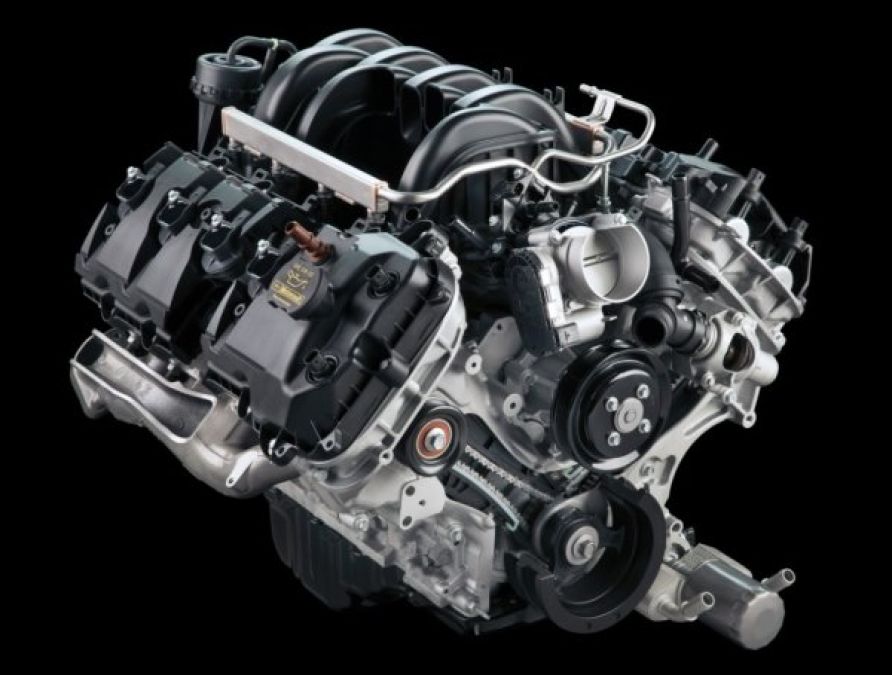
(5.0L V8)
The different in daily driving performance between the 2016 F150 with the 5.0L V8 and the 2016 F150 with the 3.5L EcoBoost V6 is very minimal, but it is there. The V8 offers the quick pop right from the start, but the EcoBoost feels stronger as you move away from the line – making the EcoBoost the quicker of the two trucks thanks to the extra torque. However, an old school truck buyer who prefers to feel of the V8 may prefer the slightly less powerful engine with the more familiar torque curve over the high tech, twin turbo V6 – which has a distinctly different feel under hard acceleration.
When cruising along the highway at speeds ranging from 65-75 miles per hour, the added power needed to move around slow-moving traffic seems to come a little more easily from the EcoBoost so, while the gap is very narrow, the EcoBoost is the quicker-feeling truck in every situation outside of the initial launch.
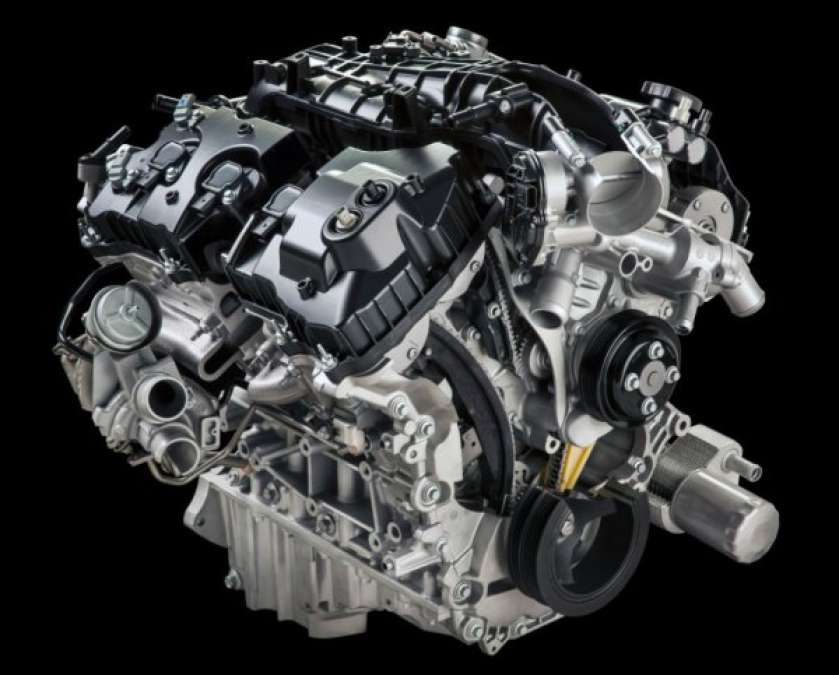
Of course, there is also the fact that the EcoBoost engine is 1mpg better in every category based on EPA findings, but that difference is relatively negligible for this discussion.
Really, in pitting these two F150 pickups head to head based on daily driving characteristics, the winner comes down to driver’s preference. Those prospective buyers who like the quicker pop and the roar of the engine will likely lean towards the V8 while those buyers who aren’t interested in sound and who want more powerful through the midrange will likely favor the EcoBoost V6 – although I personally enjoy driving the EcoBoost V6 over the 5.0L V8.
Hauling 1,000lbs of Horse Feed
First up, my routine hauling test for all applicable vehicles consists of driving to my local grain store, where I load up 1,000lbs of bagged horse feed. 1,000lbs is well below the payload capacities of both of my F150 test trucks and, as you might imagine, neither truck broke a sweat with the extra weight out back.
The same driving characteristics of each engine proved to be true when the beds were loaded with the half ton of grain, as both the V8-powered F150 Lariat and the EcoBoost-powered F150 Limited offered the same strong acceleration through the entire powerband. As was the case when unladen, the 5.0L V8 offered more grunt right at the start of a long pull while the EcoBoost came on a touch later – but pulled stronger through the midrange. Both trucks hauled the load very well, but the EcoBoost still offered an edge in performance with the extra weight.
Really, each of my 2016 F150 test trucks handled this medium sized load very well, so if this is the type of work your new truck will be doing regularly, I would say that neither engine has a defined advantage. As was the case with normal daily driving, picking an F150 premium engine to haul a load of this size – or even one slightly heavier – will come down to the driver’s personal preference based on how each truck drives with the different engine.
Pulling the 2-Horse Trailer
Finally, each of the 2016 Ford F150 pickups were tasked with pulling my 2-horse trailer while loaded up with a pair of our champion show horses. This trailer weighs right around 5,000lbs when loaded and this is the trailer test that I conduct with every applicable vehicle (every vehicle which will safely tow at least 5,000lbs) and this is the same trailer that I routinely pull with my own half ton truck. I have pulled this same trailer setup with multiple F150 pickups including the new 2.7L EcoBoost V6, the premium 3.5L EcoBoost and the previous, slightly less powerful 5.0L V8. As gas-powered half ton trucks go, the 3.5L EcoBoost is one of the best engines I’ve tested in the past 5 or 6 years and I recommend it to any prospective buyers who do a great deal of towing, especially if they tow very heavy loads.

However, with my test trailer weighing well under the maximum capacity of either of these 2016 Ford F150 pickups, I was interested to see which felt better under this relatively light-yet-common load.
In front of my horse trailer, the 2016 F150 Lariat with the 5.0L V8 was predictably sharper from a stop, with a ton of power at your disposal as soon as you put the pedal to the floor. Keep in mind, I am not talking about record 0-60 times with my horses in a trailer out back but rather, I was looking to see which engine took less effort to get away from the stopping point at a similar rate to the surrounding traffic. The EcoBoost is once again a very quick spooling twin turbo engine, but the V8 felt stronger from a stop – especially when starting out on a hill.
So, advantage V8? Not quite.
While the F150 with the V8 felt stronger from a stop, the EcoBoost’d F150 Limited pulled my test trailer far more comfortably out on the open road. When cruising with highway traffic, I barely had to touch the accelerator pedal of the EcoBoost F150 to keep pace with the vehicles around me and when I came to a steady uphill grade, I didn’t have to ask very hard for plenty of twin turbo power to keep up at my cruising speed. The 5.0L V8 certainly had no issues pulling the 5,000lb trailer, but when cruising on the highway at 65-70mph, I found that I had to push the engine harder to keep up with traffic and when we hit uphill climbs, I had to get hard into the throttle to force the transmission to step down a gear. The 5.0L still pulled my horse trailer very well and I wouldn’t think twice about pulling my horses all of the time with a V8 F150, but in a battle of inches – the EcoBoost V6 inches ahead of its V8 counterpart.
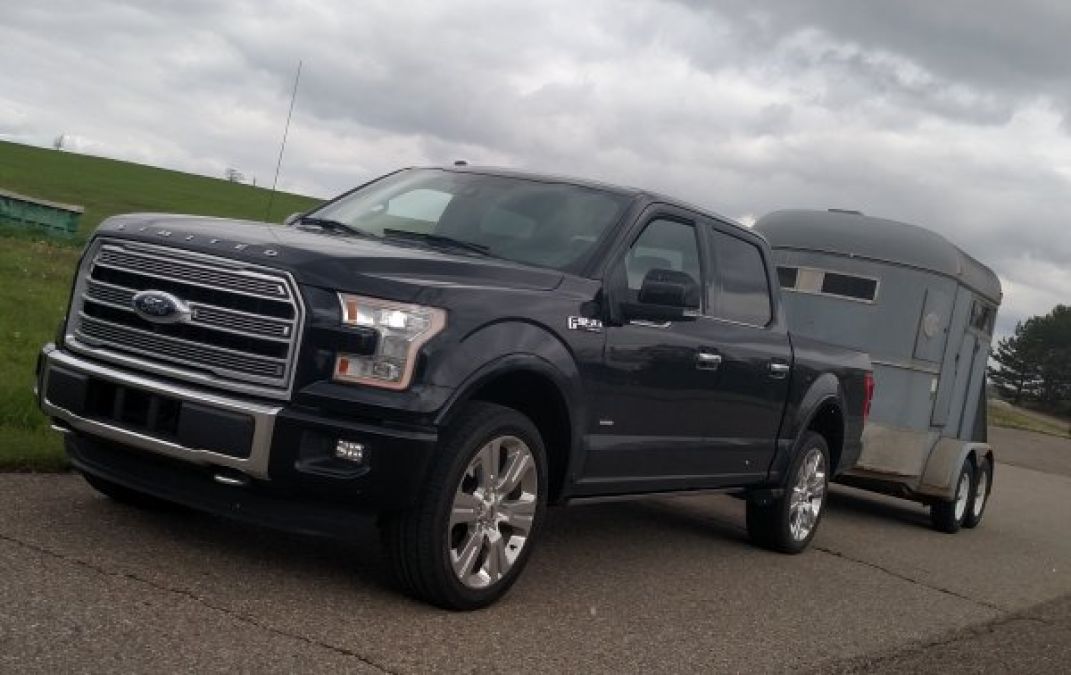
While each of my 2016 Ford F150 test trucks pulled my 2-horse trailer very well, I felt that the 3.5L EcoBoost was the more capable of the two engines through the heart of the powerband – where your engine spends much of its time when pulling a trailer.
Which Engine is for You?
So, if you are shopping for a 2016 Ford F150 and you are weighing the pros and cons of the 5.0L V8 against the 3.5L EcoBoost V6 – here is a quick rundown of the advantages of each.
The 5.0L V8 has more horsepower and it is naturally aspirated, so you get a touch more initial power when moving out from a stop. The 5.0L V8 costs anywhere from $500 to $1,000 less than the 3.5L EcoBoost depending on the trimline chosen and while it has far less torque, the 5.0L V8 has a significant advantage in maximum payload capacity. If the feel of a V8 with sharper throttle response, greater payload capacities and a lower price of purchase are your key concerns, a 2016 F150 with the 5.0L V8 is going to be the best engine for you.
On the other hand, if don’t mind paying a little more for an engine in your new truck that offers slightly better fuel economy than the V8 and gobs more torque – thus improved performance when pulling a trailer and the ability to far more weight – the 3.5L EcoBoost V6 is the best 2016 F150 to meet your needs.
The EcoBoost doesn’t offer quite the same instant-on feel when leaving the line from a stop, but in every other way – particularly when towing - the twin turbo V6 outperformed the 5.0L V8 in my tests. Unless you plan to regularly haul more than 2,000lbs or you are specifically looking to save money at the point of purchase – my advice is to give the 3.5L EcoBoost V6 a chance. Even if you prefer the instant-on feel of the V8 and you have been driving a V8 truck for years, I would bet that most truck drivers who like some extra snap in the step of their half ton pickup will quickly learn to love the acceleration characteristics of the 3.5L EcoBoost V6.
The 5.0L V8 is a great engine, but don’t let the critics who fear new technology turn you off of the 3.5L EcoBoost V6. This twin turbo mill is one of the best engines in that segment and it makes the 2016 F150 one of the most powerful and one of the most capable trucks in the half ton segment – without any real compromise.






Comments
Only the Limited trim level
Permalink
Only the Limited trim level has that reduced payload capacity,
3.5L EcoBoost in an XLT trim can haul the 2,000 lb payloads as well.
Nothing mentioned on the
Permalink
Nothing mentioned on the maintenance costs of the two engines or the expected longevity comparisons. Common sense says the Ecoboost has more moving parts and would be subject to higher maintenance costs to ensure the engine would deliver as new performance as the miles tick off the odometer. Will the Ecoboost survive past 150,000 miles? I would tend to bet on the V8 until these questions can be answered with any certainty.
I have a 2014 Eco boost and
Permalink
In reply to Nothing mentioned on the by Brad Baltzer (not verified)
I have a 2014 Eco boost and love it. I have a supplier with a 2013 Eco boost with 500,000 kms, that's 300,000 miles and everything is original except for brakes and tires. Only ever runs conventional motor oil. Original turbos are still good.
Nice review. Do you think the
Permalink
Nice review. Do you think the ecoboost will go for 200k miles? It has more moving parts.
Absolutely, I would expect
Permalink
In reply to Nice review. Do you think the by Russ (not verified)
Absolutely, I would expect the Ford turbo to see 300,000+, I am sure we'll see multiple 1,000,000 examples in the hands of private owners pop-up within the next 3-4 years as owners have the opportunity to accumulate enough mileage.
2012 F150 crew Ecoboost with
Permalink
In reply to Nice review. Do you think the by Russ (not verified)
2012 F150 crew Ecoboost with 187k ..... rear differential bearings at 125k .... 28k trailer miles... no other problems... engine has been trouble free
I bought the 2015 Lariat with
Permalink
I bought the 2015 Lariat with the 5.0L V8. I towed an 8K lb travel trailer 7K miles on a loop through the west. I did okay but I didn't like the downshifting on grades and there were times on 6% grades it had a hard time keeping 45 mph. When I got back I traded for the 2016 Lariat with the 3.5L V6 Echoboost. While I have not gone that far west, there's a 6% grade near where I live. The V6 maintained the 55 mph limit with only one downshift to 5th. I was impressed and happy with the trade, not to mention liking the 2-3 more mpg.
I have a 2016 with the 5.0l
Permalink
I have a 2016 with the 5.0l and it doesn't have the tranny cooler. I'm assuming the towing capacity is less. Any idea how much less? Can't seem to find any info on it.